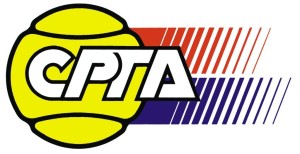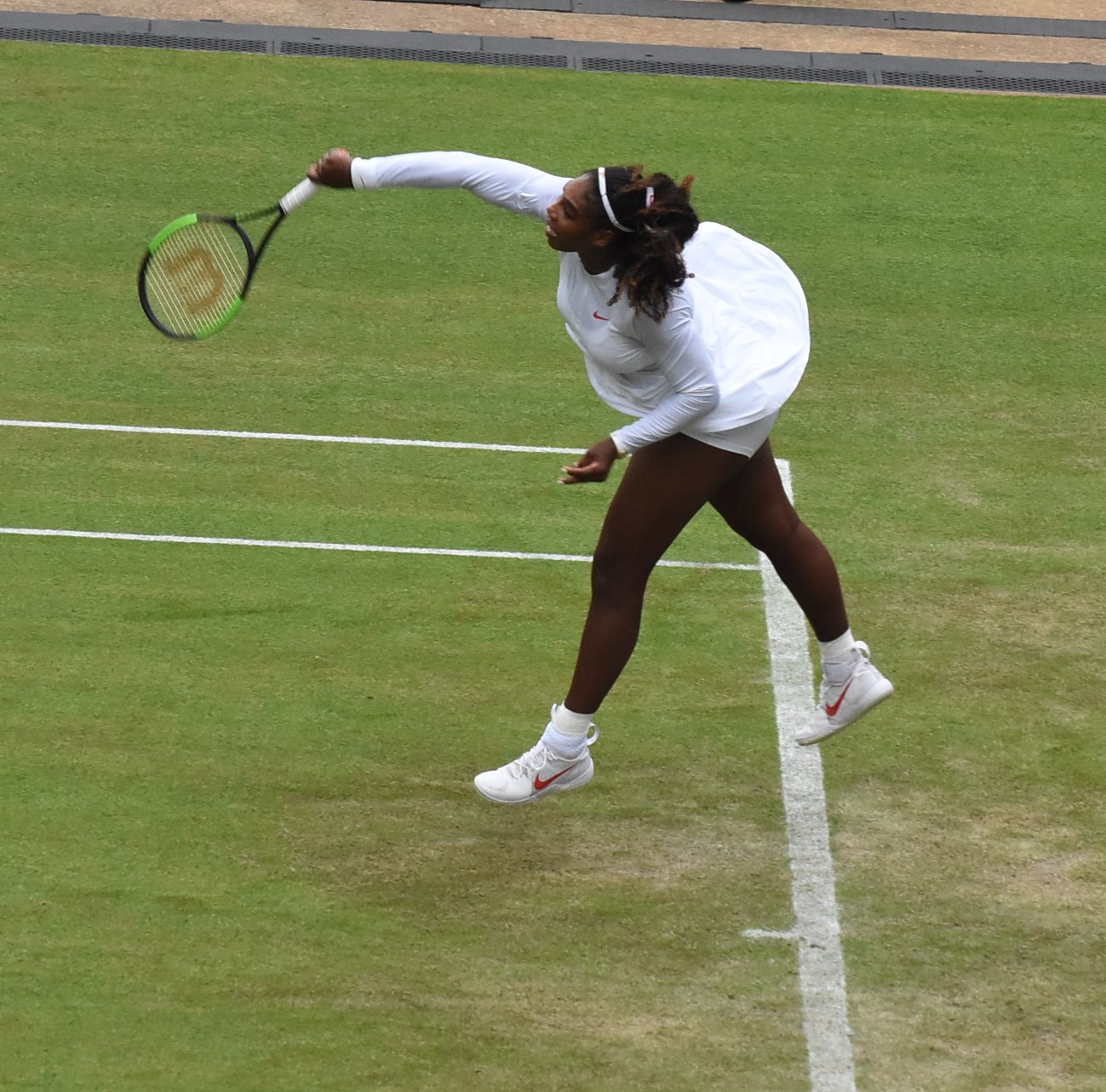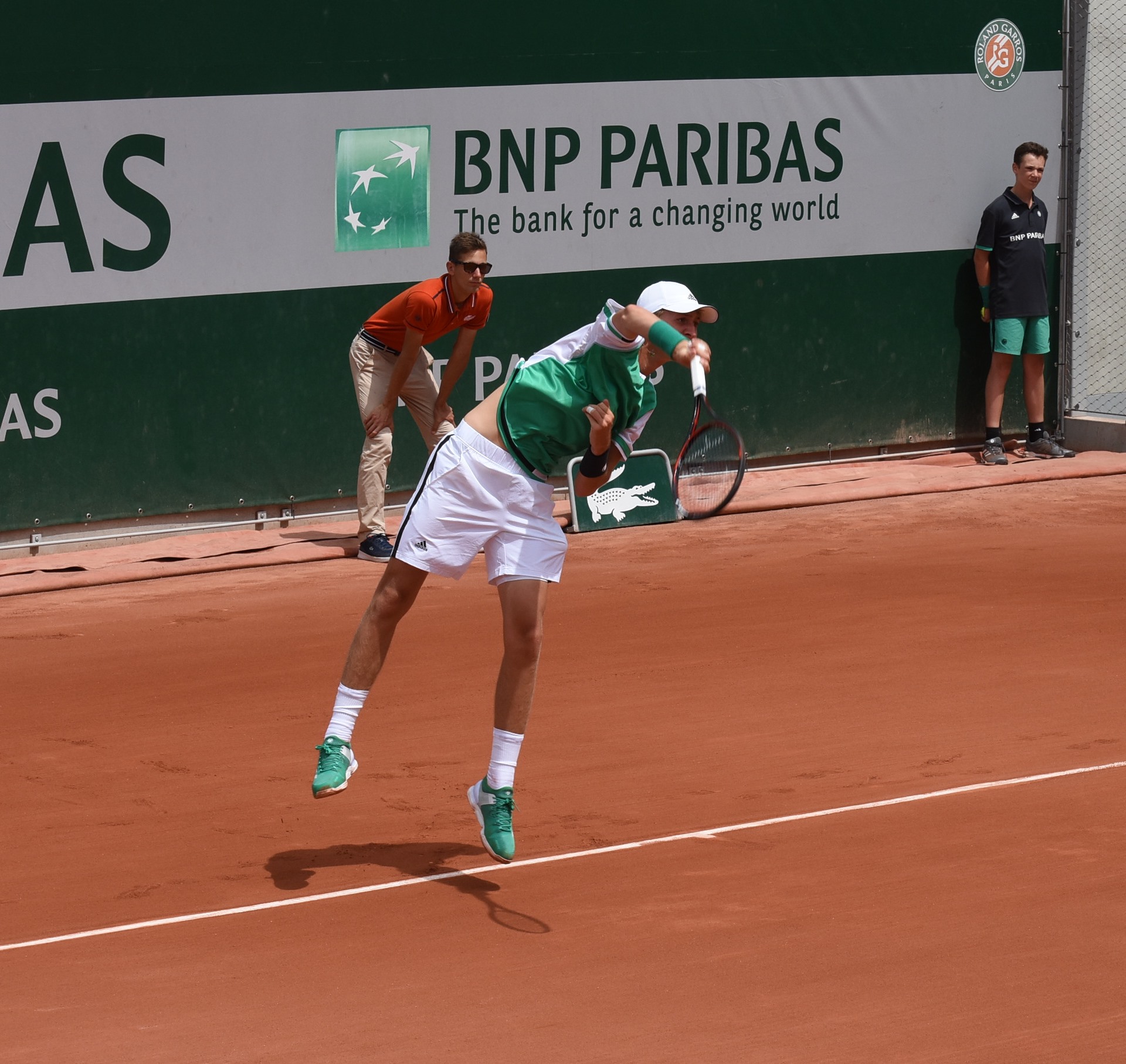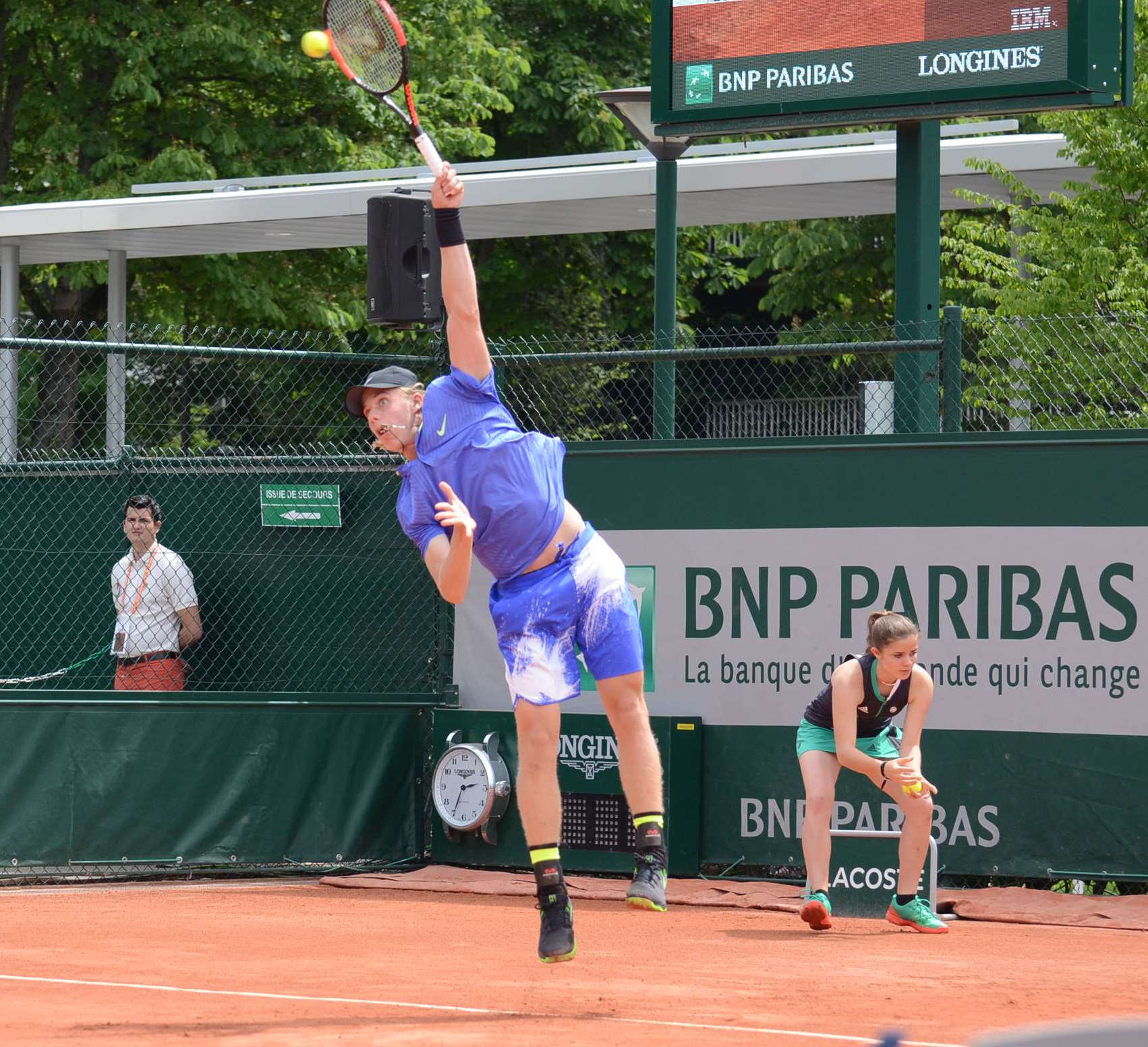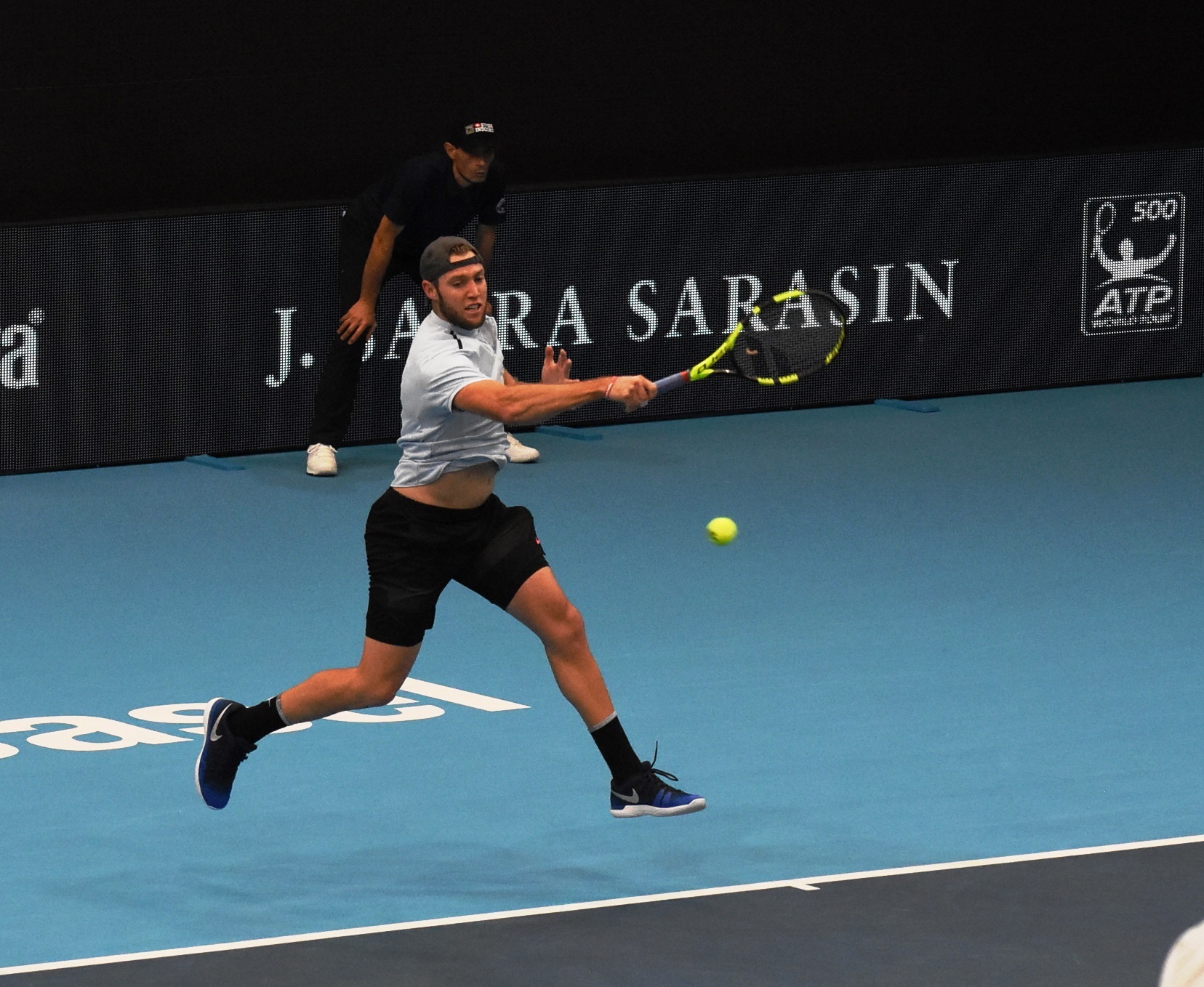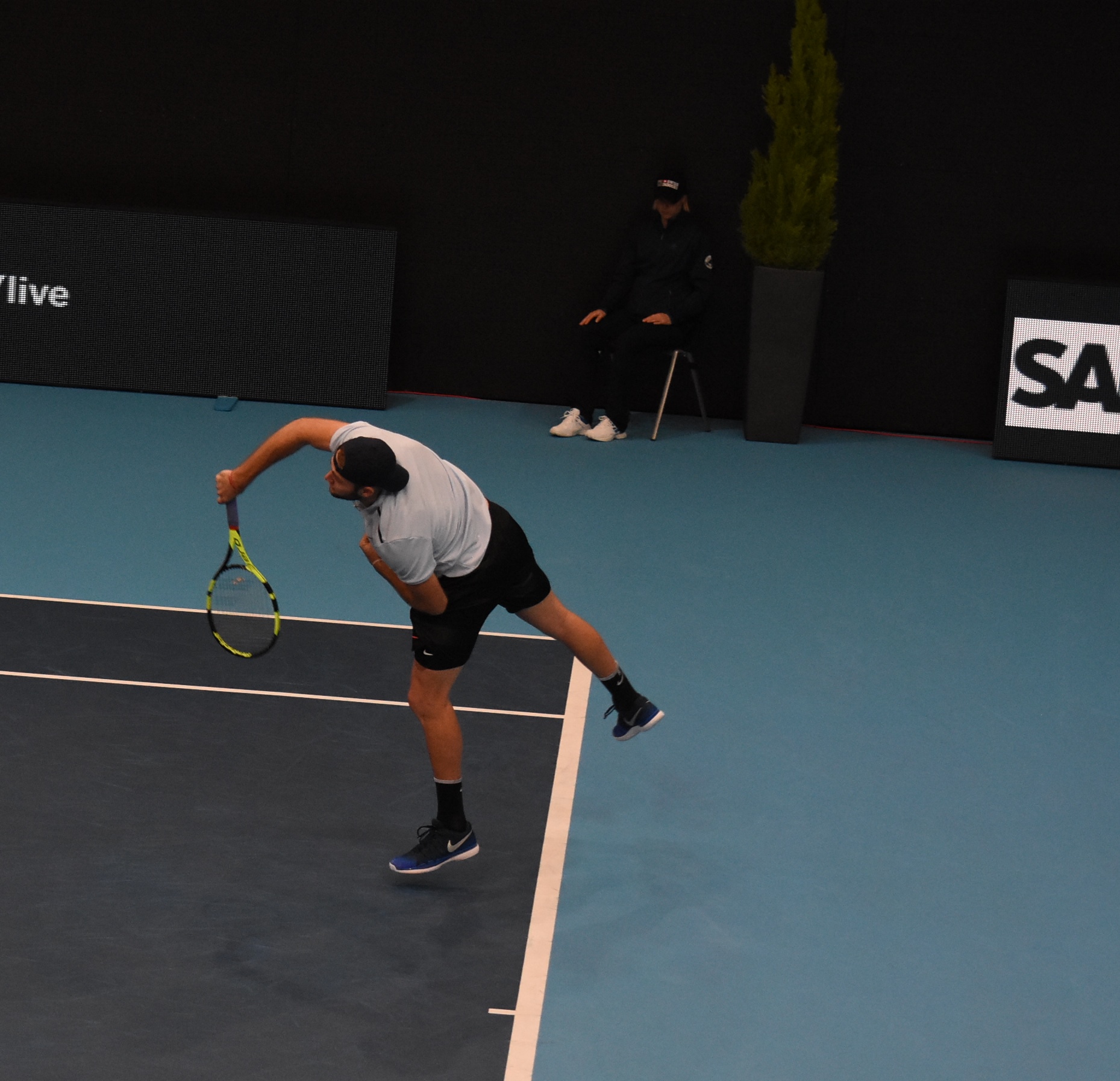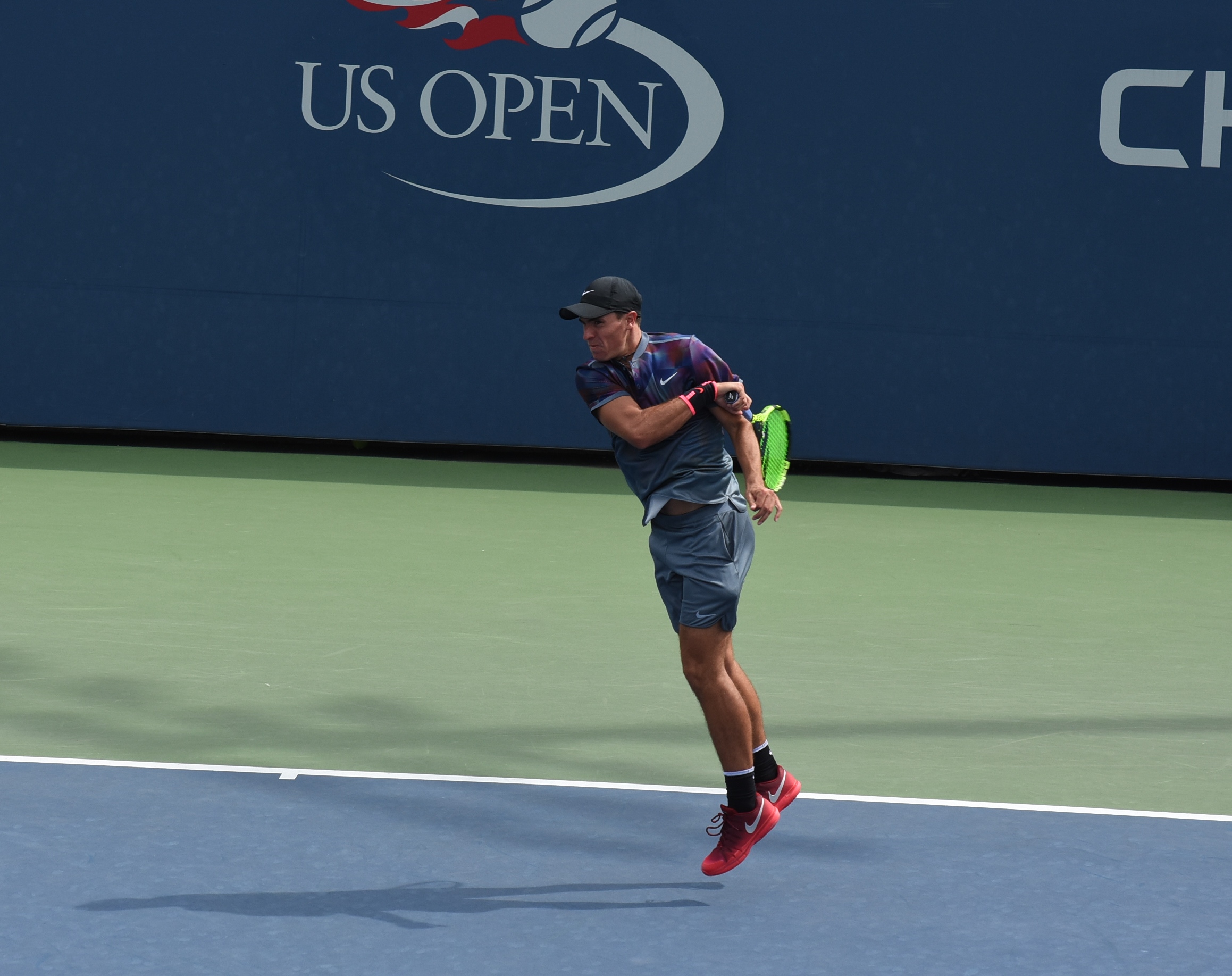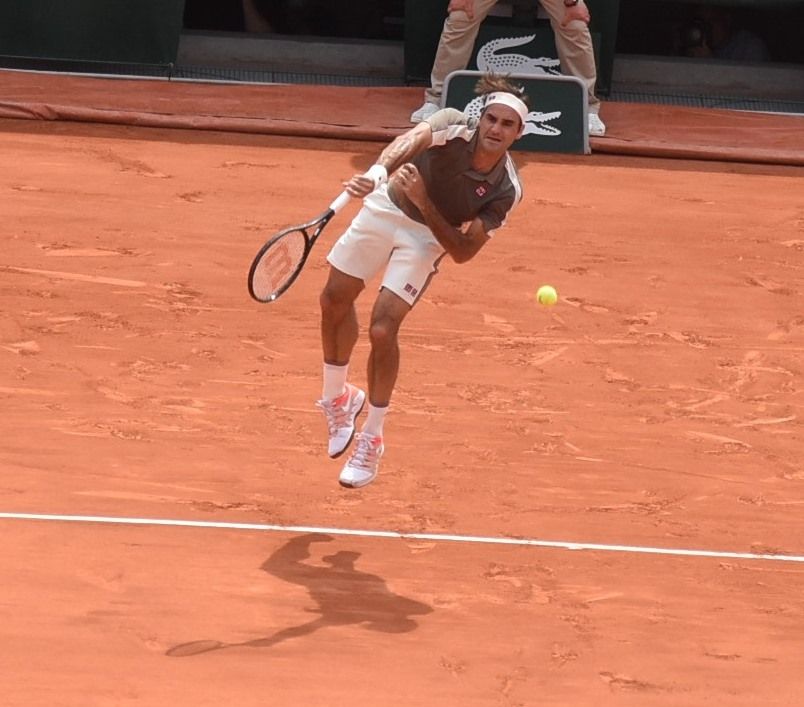
Roger Federer – Secrets of his Service 3.0
His Service 3.0 is an almost ideal stroke with a high level of the racket stability in the space, thanks also to the underlying helix form. The next main deciding aspect is the (in most cases) nearly perfect body energy unloading against the target based on the well-controlled (targeted) long-axis pronation. The photos below show that (in a contrary to the rather dangerous myths about the necessity to swing the racket by the non-dominant (her left) foot, as preached for decades in most of the tennis books and by most of the tennis coaches), Roger stays....
